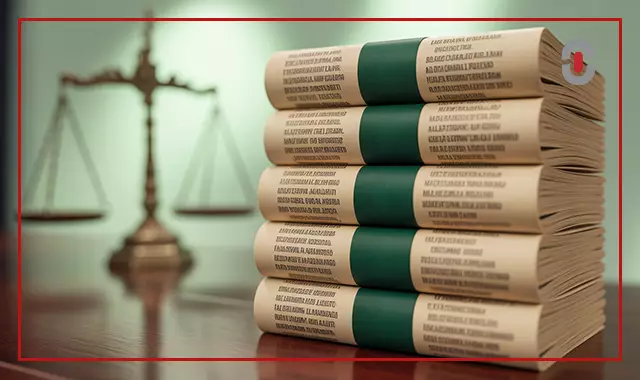AI Overview
| Category | Summary |
| Topic | Challenges and best practices in Malay legal translation, focusing on accuracy, terminology, and legal compliance across jurisdictions like Malaysia and Brunei. |
| Purpose | To educate readers—particularly legal, compliance, and translation professionals—on the risks, regional legal nuances, and necessary expertise involved in translating legal content into Malay. |
| Key Insight | Malay legal translation is not just linguistic—it’s legal. Dual legal systems (common law and Islamic law) require expert handling of ambiguous terms, local compliance, and jurisdictional differences to avoid serious liabilities. |
| Best Use Case |
Legal teams, HR departments, and multinational businesses translating employment contracts, compliance policies, or regulatory filings into Malay for Malaysia, Brunei, or ASEAN regions. |
| Risk Warning | Using generalist translators or AI alone can result in mistranslations of critical clauses, leading to unenforceable contracts, financial losses, or legal disputes in court. |
| Pro Tip | Always use native-speaking legal translators with jurisdiction-specific expertise and a tiered review process to ensure your documents meet both linguistic and legal standards. |
This real-world mishap underscores a vital truth: legal translation is not just about language—it’s about law, liability, and legitimacy. In multilingual jurisdictions like Malaysia, where documents may need to align with both common law and Islamic legal frameworks, the stakes are even higher. Whether you’re drafting employment agreements, regulatory disclosures, or compliance policies, Malay legal translation demands precision, cultural fluency, and legal expertise.
In 2018, a commercial contract between a Malaysian tech startup and a European vendor went awry when a mistranslated clause about “termination rights” led to a legal standoff. The Malay version of the agreement used a term that, while common in business communication, lacked legal clarity. The court later ruled the clause ambiguous, costing the startup both time and money in arbitration.
As we see, serious challenges in Malay legal translation may occur. In this article we will focus on three major pillars: accuracy, terminology, and compliance, because their understanding is essential for maintaining legal integrity and avoiding costly errors.
The Complex Terrain of Malay Legal Translation
Translating legal documents into or from Malay isn’t a straightforward linguistic task—it’s a nuanced balancing act between legal accuracy, cultural appropriateness, and jurisdictional compliance.
Ambiguity Between Legal Systems
Malaysia’s legal framework is unique. It blends British-based common law with Islamic legal principles in certain domains like family law and finance. This duality introduces conceptual ambiguities. For example, certain English legal terms such as “beneficial ownership” or “fiduciary duty” may lack direct one-to-one equivalents in Malay. The legal translator must not only find the closest linguistic match but ensure the legal meaning survives the translation—no easy feat when the systems interpret responsibility and liability differently.
Missing Terminology Equivalents
Unlike technical translation, where glossaries can often provide standardized terminology, legal terminology in Malay frequently lacks codified or universally accepted equivalents. Translators may be forced to choose between a literal translation (which risks inaccuracy) or a culturally and legally appropriate phrase (which may lose nuance). Misinterpretation of even a single term can result in regulatory violations or unenforceable contracts.
Regional Legal Nuances
Legal translation in Malaysia must also account for regional differences, particularly when documents are intended for audiences in Sabah or Sarawak, where legal practices and court interpretations may differ from Peninsular Malaysia. Similarly, documents intended for Brunei—a country that also uses Malay but applies a more expansive Sharia-based legal framework—require tailored phrasing and formatting to remain compliant.
Cultural Sensitivities and Legal Neutrality
The tone and phrasing of legal documents in Malay must maintain strict neutrality. Certain phrases that might seem harmless in English could carry cultural or religious connotations in Malay that are legally problematic. A good example is the phrasing of dispute resolution clauses or declarations, which may require adjustment to avoid religious or cultural taboos.
1-StopAsia’s Approach: Precision, People, and Process
At 1-StopAsia, we understand that legal translation isn’t just translation—it’s transformation. It’s the art of transferring meaning, compliance, and liability across languages, cultures, and legal systems. That’s why we take a multi-layered, people-first approach to Malay legal translation.
Legal Experts, Not Just Linguists
We work exclusively with native-speaking Malay translators who also have a legal background—often with training or work experience in Malaysian or international law. This ensures that our translations are not just linguistically fluent but legally sound.
Rigorous Multi-Tier Review
Every document undergoes a structured review process, including:

- Terminology checks against established legal glossaries. This ensures that all legal terms used in the translation are not just linguistically accurate but also legally appropriate within the specific jurisdiction. Consistency with glossary terms helps avoid ambiguity and aligns the content with standard legal usage.
- Formatting reviews to ensure compliance with local document norms (e.g., margins, headings, clause numbering, certification stamps). Proper formatting isn’t just aesthetic—it affects the validity of documents submitted to courts, government agencies, or regulatory bodies. Misplaced margins or missing certification elements can lead to rejection or legal delays.
- Cross-jurisdictional vetting when content involves countries like Brunei or Singapore. Since legal systems across the region share common roots but have evolved independently, this step ensures that translated content respects both the letter and spirit of the law in each applicable country. It reduces the risk of conflicts in meaning or enforceability across borders.
Custom Compliance Solutions
Every case we handle involves terminology development tailored to your business context—whether you’re translating a tech company’s privacy policy or a multinational’s HR contract. We build and maintain custom glossaries to ensure consistency across all your legal documents and across languages.
Confidentiality and Certification
We understand the sensitive nature of legal documentation. That’s why every project is treated with confidentiality and client information is safeguarded using security protocols that are recognized globally.
Real-World Risks: A Common Case of Compliance Slippage
While we’re bound by NDAs for most client work, the industry offers plenty of cautionary tales. One recurring issue across industries is the mistranslation of employment contracts.
For example, a multinational company expanding into Malaysia once translated its global employment agreement into Malay using a non-specialized agency. Unfortunately, key clauses about severance pay and non-compete obligations were either mistranslated or omitted. When a legal dispute arose with a former employee, the Malay version—submitted in court—lacked the enforceable weight needed for the company’s defense. The result? An expensive settlement and months of legal cleanup.
That’s why translation companies must complete tiered legal review and terminology verification to flag the problematic terms before the document was finalized.
Conclusion: Legal Translation Is High-Stakes Work—Choose Wisely
Poorly translated legal documents don’t just read awkwardly—they cost businesses time, money, and reputation. In Malaysia, where dual legal systems and cultural norms converge, you need a partner who gets the full picture—not just the words on the page.
At 1-StopAsia, we blend linguistic precision with legal expertise, ensuring that your Malay compliance documents, contracts, and legal materials are airtight from both a legal and cultural standpoint. Whether you’re entering the Malaysian market or expanding within ASEAN, our team of certified legal translators in Malay will help you stay compliant, confident, and credible.
Need Help with Compliance?
Ensure your contracts, policies, and compliance documents are translated with precision, confidentiality, and legal accuracy. Partner with our expert legal linguists to safeguard your communications—before costly issues arise. Talk to 1-Stop Asia today and get it done right.
